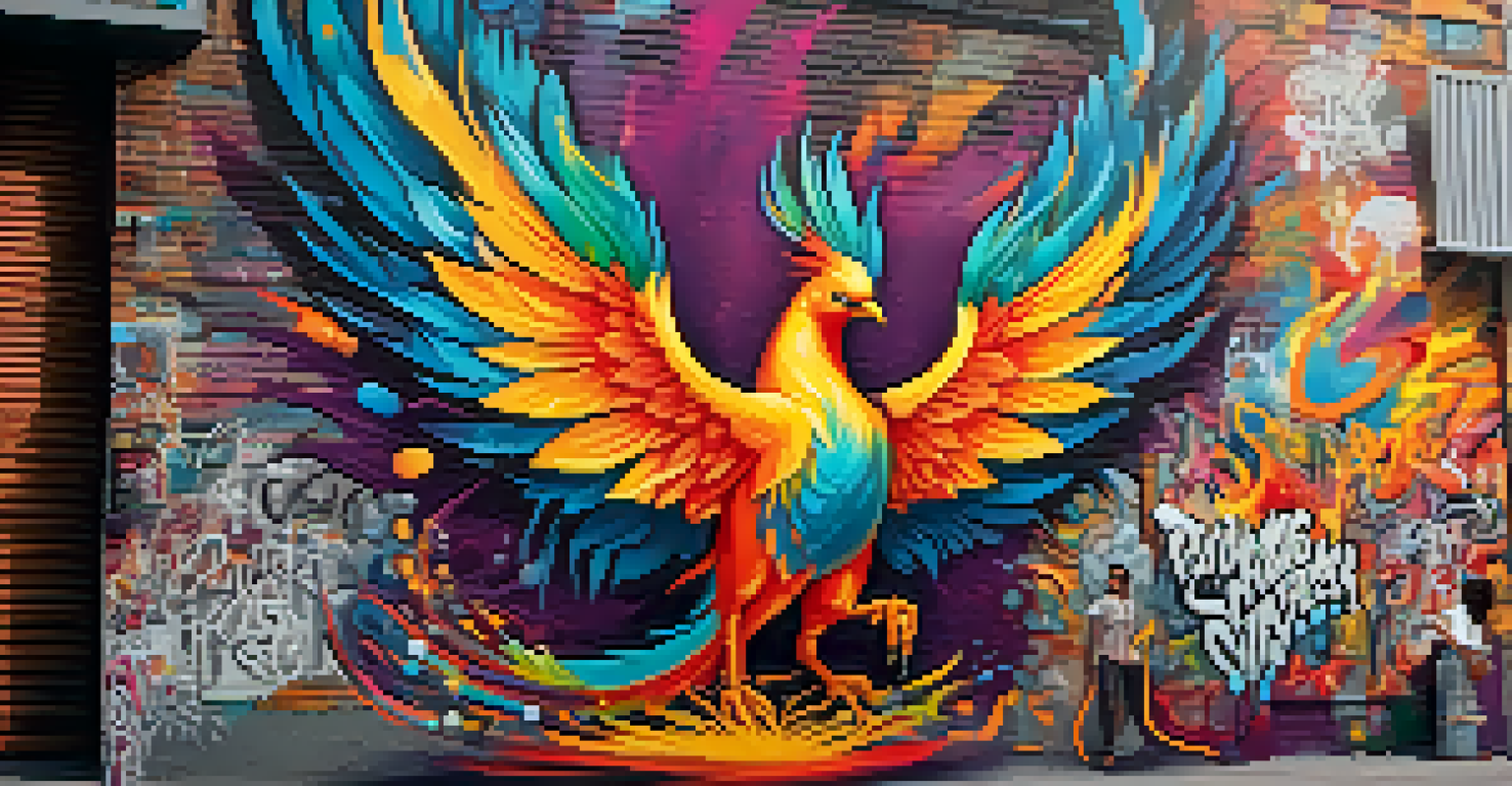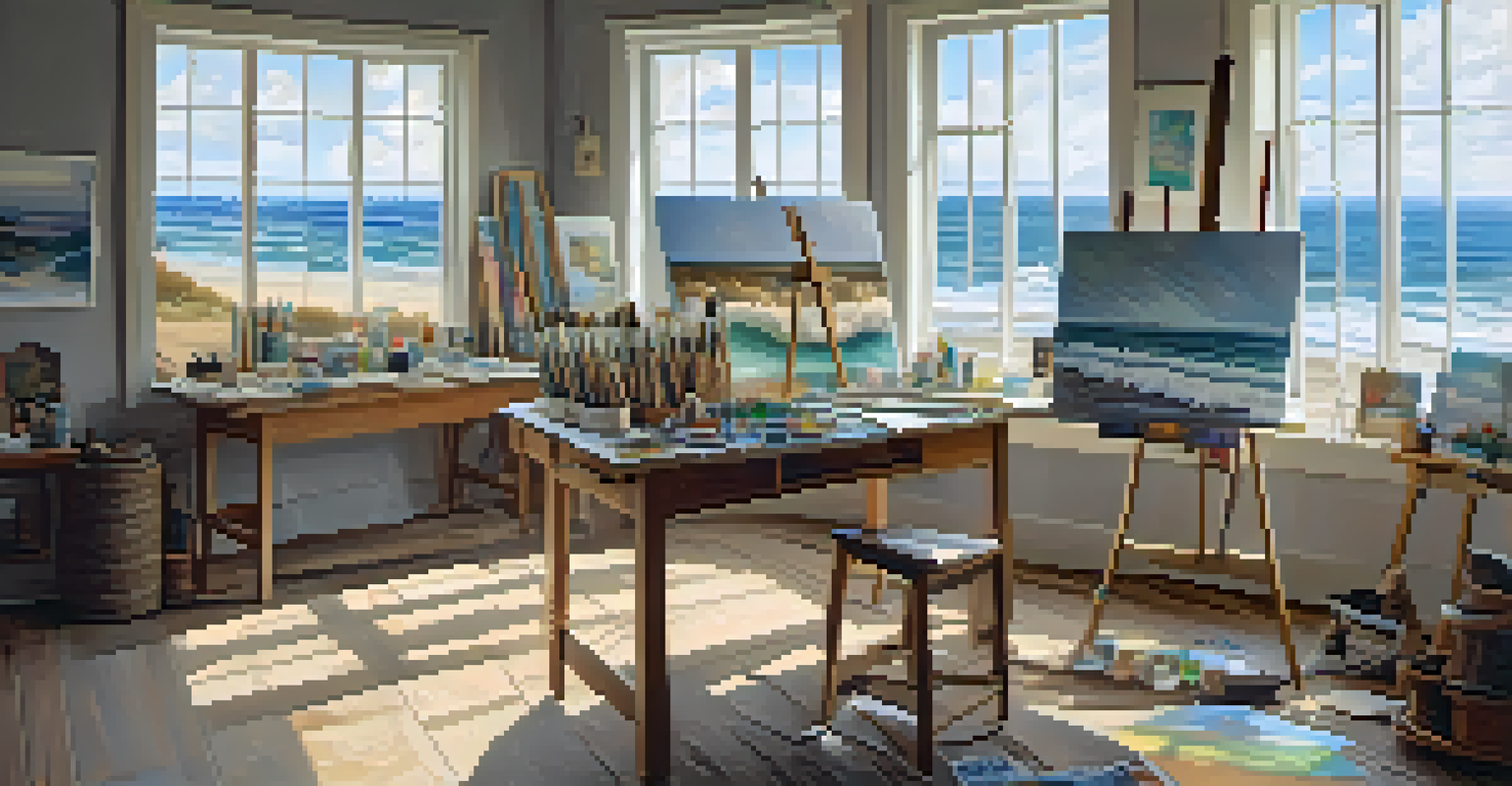Exploring Art and Travel: A Journey Through Artistic Movements

The Intersection of Art and Travel: A Dynamic Duo
Art and travel have long been intertwined, each influencing the other in profound ways. When we travel, we encounter diverse cultures, traditions, and artistic expressions that enrich our understanding of humanity. This exchange can spark creativity and inspire new artistic movements, as artists draw from their experiences in different locales.
Traveling – it leaves you speechless, then turns you into a storyteller.
Consider the impact of the Grand Tour in the 18th century, when young European aristocrats traveled to Italy and France to absorb classical art and architecture. This journey not only shaped their personal aesthetics but also influenced the art movements that followed, such as Romanticism and Neoclassicism. The idea that travel can transform artistic expression remains relevant today.
In essence, traveling opens our eyes to the beauty of the world and the myriad ways people express themselves through art. The connections we make while exploring new places can lead to a deeper appreciation of both art and culture, encouraging us to see the world through an artistic lens.
Renaissance: A Cultural Rebirth on the Move
The Renaissance, spanning the 14th to the 17th centuries, marked a significant revival of classical art and learning, largely fueled by travel. Artists like Leonardo da Vinci and Michelangelo not only created masterpieces but also traveled across Italy, sharing ideas and techniques. This movement was characterized by a focus on humanism, perspective, and naturalism, which were inspired by the classical works they encountered.

Cities like Florence became cultural hubs, attracting artists and thinkers from all over Europe. The vibrant exchange of ideas in these urban centers played a vital role in the evolution of art during this period. Through travel, artists were able to immerse themselves in the works of their predecessors, which ultimately shaped their own styles.
Art and Travel Inspire Each Other
The interplay between art and travel enriches creativity, allowing artists to draw inspiration from diverse cultures and experiences.
Thus, the Renaissance exemplifies how travel can serve as a catalyst for artistic innovation. By exploring new environments and engaging with different cultures, artists were able to push the boundaries of creativity, laying the groundwork for future movements.
Impressionism: Capturing the Essence of Place
The Impressionist movement of the late 19th century is a perfect example of how travel can influence art. Artists like Claude Monet and Pierre-Auguste Renoir sought to capture fleeting moments, often painting en plein air, or outdoors. Their works reflect the beauty of everyday life and the changing light in various locations, showcasing the impact of their surroundings.
To travel is to discover that everyone is wrong about other countries.
Monet’s series of paintings of the Rouen Cathedral, for instance, highlights how different times of day and weather conditions can alter our perception of a single subject. This approach encourages viewers to appreciate the subtleties of light and color that travel offers, reminding us that every location has its unique charm.
Impressionism invites us to see the world in a new way, emphasizing the importance of experiencing different places. By immersing themselves in nature and urban landscapes, Impressionist artists were able to convey the beauty of the moment, making their work timeless and universally relatable.
Modern Art: A Journey Through Innovation
As we moved into the 20th century, modern art emerged as a reflection of a rapidly changing world. Artists like Pablo Picasso and Henri Matisse traveled extensively, drawing inspiration from different cultures and artistic traditions. This global perspective led to the development of new styles such as Cubism and Fauvism, which challenged conventional notions of representation.
Picasso's travels to Africa, for example, played a crucial role in shaping his work during the early 1900s. He was inspired by African masks and sculptures, which led to a radical departure from traditional European aesthetics. This blending of influences showcases how travel can ignite innovation in art, encouraging artists to break free from established norms.
Cultural Exchange Fuels Innovation
Travel fosters cultural exchange, enabling artists to collaborate and blend various artistic styles, resulting in groundbreaking innovations.
Modern art is ultimately a testament to the power of exploration. By venturing outside their comfort zones, artists were able to create groundbreaking works that continue to resonate with audiences today, proving that art is a reflection of our collective experiences.
Street Art: The World as a Canvas
Street art has exploded in popularity over the past few decades, transforming urban spaces into vibrant galleries. Influenced by global travel and cultural exchange, artists like Banksy and Shepard Fairey use city streets as their canvas, addressing social issues and personal narratives. This movement invites viewers to engage with art in their everyday lives, blurring the lines between artist and audience.
Traveling through cities around the world, one can see the unique styles and messages that street artists convey. From the colorful murals of Mexico City to the thought-provoking pieces in Berlin, each location tells a story through its art. This accessibility allows people to connect with artistic expressions that resonate with their own experiences and emotions.
Street art serves as a reminder that art is everywhere, and it can inspire change. By bringing art to the streets, creators foster a sense of community and encourage dialogue, showcasing the power of travel in shaping public art and its role in society.
Cultural Exchange: Art as a Bridge Between Nations
As our world becomes increasingly interconnected, the role of art as a tool for cultural exchange has never been more relevant. Artists often travel across borders to collaborate with others, sharing their unique perspectives and techniques. This exchange fosters understanding and appreciation for diverse cultures, ultimately enriching the global art scene.
For instance, the Silk Road was not just a trade route but a conduit for artistic ideas and styles. The fusion of Eastern and Western art forms during this period laid the groundwork for future artistic innovations. Today, we see similar collaborations, as artists from different backgrounds come together to create works that transcend cultural boundaries.
Future of Art Embraces Technology
As technology advances, virtual travel experiences are expanding access to global art, while the value of physical exploration remains unmatched.
Cultural exchange through art encourages empathy and respect for our differences. It reminds us that while we may come from different places, our shared humanity can be expressed through creativity, making the world a smaller and more connected place.
The Future of Art and Travel: New Horizons
As we look to the future, the relationship between art and travel continues to evolve. With advancements in technology, virtual travel experiences are becoming increasingly popular, allowing people to explore global art scenes from the comfort of their homes. This accessibility opens up new avenues for artistic exploration and appreciation.
However, nothing can replace the transformative power of physical travel. The tactile experience of standing before a masterpiece or wandering through an artist's neighborhood can leave a lasting impact. As travel resumes post-pandemic, artists and art enthusiasts alike are eager to reconnect with the world and each other.

The future holds exciting possibilities for art and travel, as we navigate this new landscape together. By embracing both traditional and modern methods of exploration, we can continue to inspire creativity and foster a deeper understanding of the diverse cultures that shape our world.